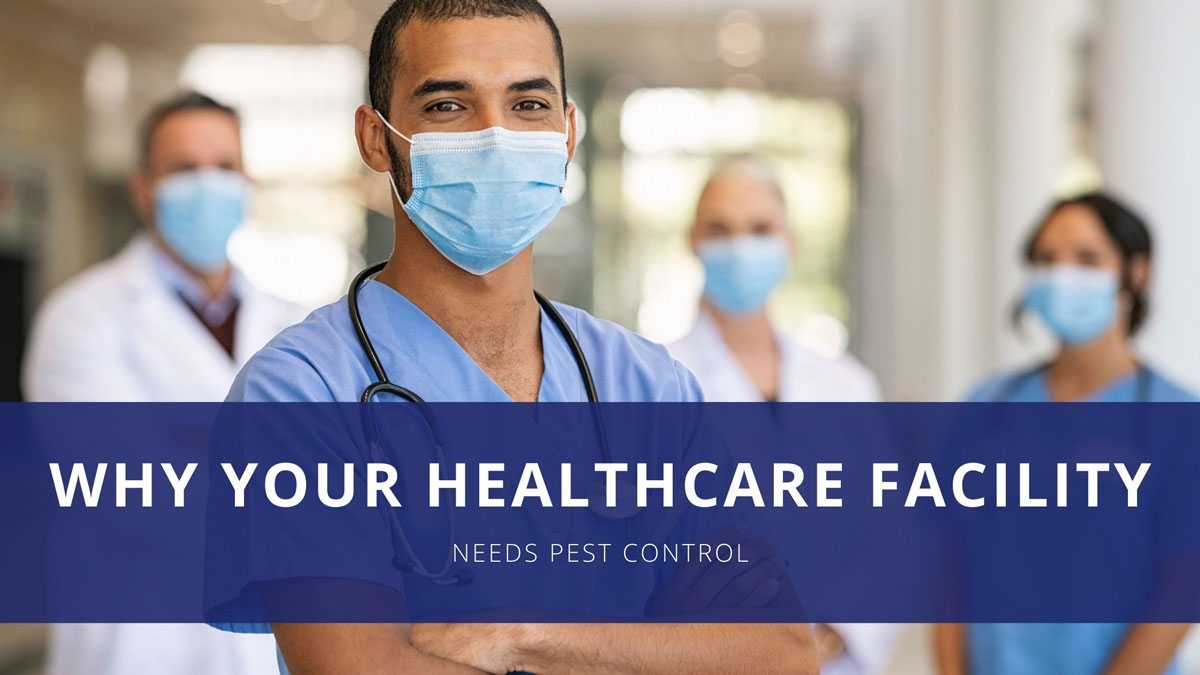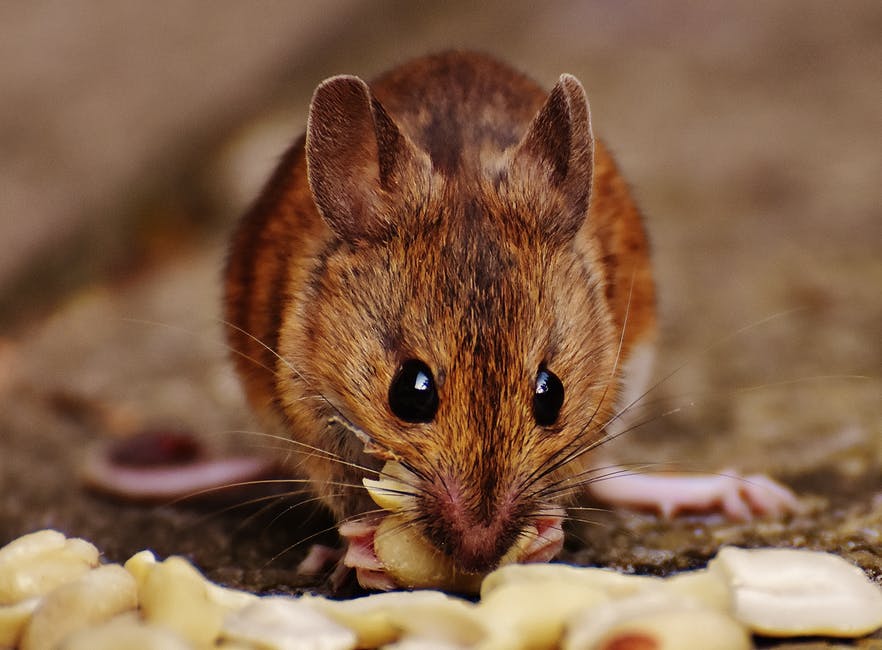Pest Control for Hospitals and Healthcare Facilities
As a healthcare facility, pest control is the last thing on your mind. You are more concerned with getting your patients in and out quickly, ensuring they are cared for in a sterile and nurturing environment, and making their routine check-ups or emergency room visits go as smoothly as possible. Unfortunately, pest infestations can put all of these goals at risk.
Mice, cockroaches, bed bugs, or even ants can put a patient or treatment room out of service. Not only is it unsettling to see insects or rodents in a place you are seeking healthcare, but it is unsanitary. Sanitation is critical in sensitive healthcare settings. Pests like cockroaches and rodents carry upwards of 30 different bacteria and viruses.
Some of these pests carry viruses and bacteria on their bodies. Ants, spiders, and mice can be responsible for spreading potentially harmful bacteria or viruses.
By nature, they will find food wherever they can. They don’t care if it’s in a trash can, a guest room, or a kitchen storage room. When they climb in these places, they pick up and deposit bacteria and viruses on their feet, bodies or through their saliva or excrement. If not handled with care, they could be responsible for spreading infectious diseases across an entire hospital.

Healthcare: Areas at Risk
Managing a healthcare facility is tough. Safeguard your staff, patients, and reputation by preventing pest problems like rodents, bed bugs, cockroaches, and birds. Get our PDF guide now.
Unwanted Pests in Healthcare Facilities
Healthcare facilities face unique challenges that make them susceptible to pest infestations. One primary cause of pest problems in healthcare settings is high foot traffic. Hospitals and healthcare facilities experience high volumes of people coming in and out at all hours. This movement can introduce pests and create opportunities for them to enter the facility. Other significant factors are food and waste management. The presence of food items in cafeterias, patient rooms, and waste in dumpsters can attract unwanted pests. Poor sanitation and improper disposal of food waste can exacerbate the problem.
Harborage areas, such as cluttered storage areas, equipment rooms, and unused spaces, provide ideal environments for pests. These areas can become breeding grounds for insects and rodents if not regularly inspected and maintained. Entry points, including gaps around windows, doors, vents, and other openings, allow pests to infiltrate the building. Identifying and sealing these entry points is essential to prevent pest infestations. Additionally, environmental factors such as moisture and temperature variations within the facility can create favorable conditions for pests. Leaky pipes, damp areas, and improperly maintained HVAC systems can contribute to pest infestations.
How to Control Pests in Hospitals & Healthcare Facilities
Effective commercial pest control in healthcare settings requires a comprehensive approach that includes prevention, monitoring, and targeted treatments. One crucial strategy is implementing an Integrated Pest Management (IPM) program. IPM focuses on long-term prevention through a combination of techniques, including sanitation, exclusion, and the judicious use of pesticides. Regular inspection and monitoring help in early detection and prompt intervention, preventing infestations from becoming severe.
Maintaining high standards of sanitation throughout the facility is vital. Ensuring food items are stored properly, waste is disposed of promptly, and dumpsters are kept clean and secure helps minimize pest risks. Exclusion techniques, such as sealing cracks, gaps, and other entry points, are critical to prevent pests from entering the facility. Installing door sweeps, repairing window screens, and using weather stripping can eliminate access points. When infestations occur, targeted treatments that minimize risks to patients and staff are necessary, so it’s important to contact a professional pest control team to tackle them quickly and safely.
Healthguard® – Integrated Pest Management for Hospitals & Healthcare Facilities
To prevent pests from derailing your day, Wil-Kil will implement a proactive and comprehensive Integrated Pest Management (IPM) program customized for the healthcare industry with HealthGuard®. This program will guard your facility and address your most significant concerns so you can put your focus elsewhere.
Benefits of HealthGuard® include:
- You can focus on patients without worrying about what crawls between the rooms. A proactive strategy ensures pests aren’t just eliminated; they are prevented.
- Keep patient treatment rooms in service by having quick and efficient service that addresses an issue with minimal delays.
- Allow patients to seek treatment with minimal disruptions due to flexible service times built around your peaks and valleys in patient flow.
The Most Common Pests in Healthcare Facilities
Due to their unique environment, hospitals and healthcare facilities can be particularly vulnerable to pest infestations. Pests in these settings pose health risks and jeopardize the sanitary conditions necessary for patient care.
The most prevalent pests found in hospitals and healthcare settings include:
Rodents, including rats and mice, are notorious for spreading diseases like Hantavirus and Leptospirosis. These pests pose significant health hazards in healthcare settings. They can contaminate food, gnaw on electrical wiring, and create unsafe conditions for patients and staff. Your Wil-Kil technician will suggest building improvements to seal off rodent entry points. Preventative measures will also help keep rodents out of your facility.
Cockroaches are a common pest in healthcare facilities and are known to carry pathogens and allergens. They can cause illnesses such as salmonellosis and exacerbate asthma conditions. Cockroaches thrive in unsanitary conditions and are challenging to eliminate, making hospital commercial pest control crucial for maintaining a healthy environment.
Ants are attracted to food sources and can contaminate sterile environments within healthcare facilities. Some species, like the Pharaoh ant, are particularly problematic due to their tendency to spread pathogens. Proper pest management in healthcare settings involves addressing ant infestations promptly to prevent contamination and maintain hygiene standards. Wil-Kil provides multiple solutions that are safe for use in healthcare facilities to eliminate ants and other pests.
Bed bugs are a growing concern in hospitals. These pests can cause itching, allergic reactions, and secondary infections, making it crucial to address infestations promptly. Bed bugs can spread quickly and are challenging to eradicate, necessitating specialized pest control services for hospitals to ensure patient and staff safety. Wil-Kil takes an efficient approach when eliminating bed bugs, including routine follow-up visits and prevention measures to keep bed bugs from spreading through your facility.
Flies, including fruit flies and houseflies, are attracted to food and waste, making them common pests in healthcare facilities. These insects can spread bacteria and other pathogens, posing a risk to patient health. Proper sanitation and regular pest control measures are essential to prevent fly infestations and ensure a clean and safe healthcare environment.
Where Are Pests Found in Healthcare Facilities?
Pests can infiltrate various areas within healthcare facilities, each requiring specific measures to prevent infestations.
Patient rooms are susceptible to pests entering through open windows, doors, or personal belongings. Regular inspections and prompt reporting of pest sightings are crucial for effective pest control.
Kitchens and cafeterias are prime pest targets due to food preparation and dining areas. Maintaining strict hygiene and implementing regular pest control measures are essential to prevent contamination and pest infestations.
Storage rooms and medical supply areas, especially when cluttered, can harbor pests. Keeping these areas organized and clean helps minimize pest risks and prevent infestations.
Dumpsters and waste disposal areas attract pests due to the abundance of food waste. Proper waste management practices are necessary to deter pests and maintain a sanitary environment.
Laundry rooms, with their moisture and warmth, can attract pests. Regular maintenance and proper ventilation are crucial to prevent pest infestations in these areas.
Bathrooms with leaky pipes and damp conditions can be conducive to pests like cockroaches and ants. Ensuring these areas are dry and well-maintained is vital to preventing pest problems.
Contact Us Today to Schedule a Comprehensive Consultation for Pest Control in Hospitals & Healthcare Facilities
Maintaining a safe environment in hospitals and healthcare facilities is essential for the health and safety of patients and staff. At WilKil, we offer commercial pest control services for hospitals, ensuring your facility remains safe and sanitary. Our team of experts is trained to handle the unique challenges of healthcare pest management, using the latest techniques and technologies to deliver effective solutions. Whether you are dealing with an existing infestation or seeking preventive measures, we are here to help. Contact us today to learn more about our pest control program, designed specifically for the healthcare industry.
Related Post From Our Blog
Why Your Healthcare Facility Needs Pest Control
As a healthcare professional or administrator, you are responsible for providing the best possible care to your patients. When pests are present in your facility, that becomes impossible. With their tendency to spread bacteria [...]
Signs of Mice in Commercial Establishments
Are you worried that mice have found their way into your workplace? During the winter, we get phone calls from all kinds of businesses (offices, warehouses, restaurants, etc.) that need someone to come in and investigate a possible mouse [...]
What to Expect from Your Commercial Pest Control Technician
Curious about what a pest control technician can do for your business? Are you wondering what the “bug guys” do every day? Well, there’s a lot involved in a typical day, but here is an [...]
Pest Control for Hospitals & Healthcare Facilities in Sun Prairie, WI
Terminix Wil-Kil Pest Control is a local Pest Control and Extermination company helping homeowners and businesses with pest issues across WI.




